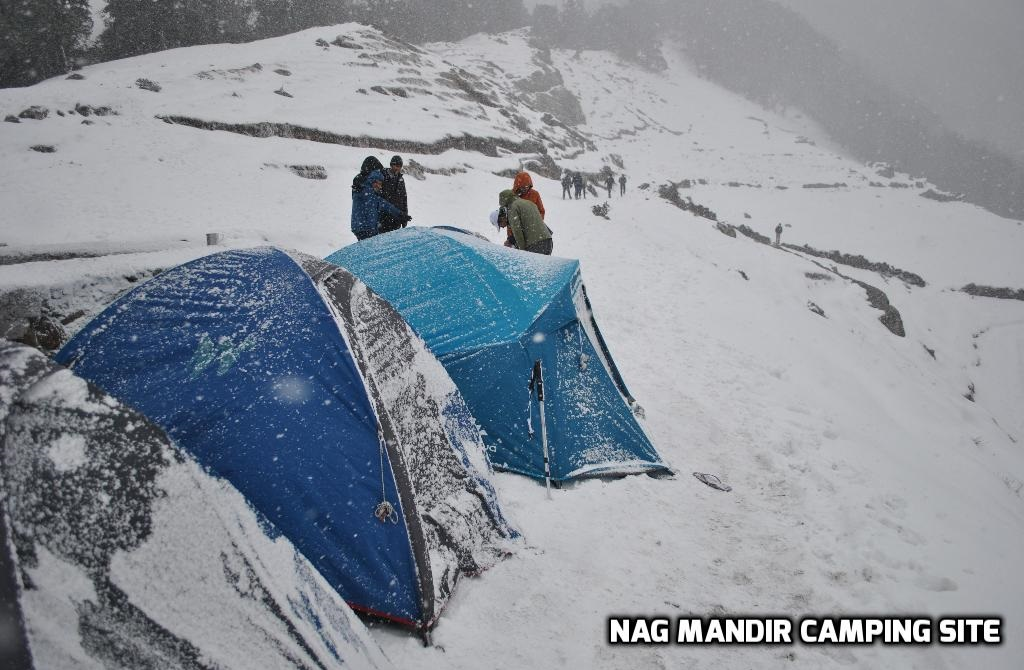views
If you're looking to kickstart your trekking journey and build confidence in exploring the mountains independently, Nag Tibba Trek is the perfect place to begin. Nestled in the Himalayas, this trek not only provides an amazing opportunity to enjoy the beauty of nature but also challenges you to learn critical survival skills. You will grow not just as a trekker, but also as an individual, understanding your inner strength and honing your teamwork abilities.
In this guide, we’ll cover everything you need to know about Nag Tibba—from planning to packing and all the nitty-gritty details that will ensure a smooth and enjoyable trek.

Why Nag Tibba is Ideal for Beginners
The Nag Tibba Trek offers a unique combination of ease and challenge. While it's classified as an easy trek in terms of fitness requirements, the trail itself isn’t well-marked, which adds an adventurous twist for trekkers. Here are a few reasons why Nag Tibba is the perfect trek to begin your independent trekking journey:
-
Easy but Challenging: Although the trek is easy, the trail from Nag Mandir to the top is through dense forest. Navigation can be tricky, so it’s an excellent opportunity to learn how to use GPS or understand the importance of hiring a local guide.
-
No Risk of Altitude Sickness: The entire trail is well within the tree line, and the maximum altitude is only around 3,000 meters. This makes it one of the safest Himalayan treks in terms of avoiding altitude-related health issues.
-
Close Proximity to Villages: With villages like Pantwari nearby, you’ll always have the safety net of heading back in case of an emergency.

Planning Your Nag Tibba Trek: Routes, Permits, and Water Sources
Know the Trail Inside Out
One of the first steps in any independent trek is to familiarize yourself with the trail. Even if you have a local guide, take the initiative to lead and only rely on help when absolutely necessary.
Picking the Route
There are two primary routes for the Nag Tibba Trek:
-
Pantwari to Nag Tibba to Pantwari (2-3 days)

-
Pantwari to Nag Tibba to Auntar (3 days)

We recommend the second route because it offers more scenic views and avoids campsite overlaps, giving you a more tranquil experience. The trail from Nag Mandir to Auntar is especially beautiful and offers a refreshing change of landscape.
Make sure you obtain necessary permits from the Forest Department in Pantwari or Auntar before starting your trek. Though there are no strict checkpoints, you don’t want to risk getting fined for not having the right documents.
Water Sources on the Trek

Water is scarce on the Nag Tibba Trek, so always carry at least 2 liters before starting. The main water points on this trek are:
-
Katiyani (just after Goat Village resort)
-
Nag Mandir (has two water sources, though not always clean)

-
Gujhit (the only source between Nag Mandir and Auntar during summers)
Having these spots marked on your map will ensure you stay hydrated without any issues.
Weather Conditions on Nag Tibba Trek
The Nag Tibba Trek can be done all year round, but the weather varies significantly depending on the season. Here’s what you can expect:
-
Summers (April - September): Temperatures range between 8-25 degrees Celsius.
-
Winters (December - March): Temperatures drop significantly, ranging from -5 to 15 degrees Celsius. During this period, snow can cover large parts of the trail, making the trek even more thrilling.
Always check the weather conditions before leaving and pack your gear accordingly, especially in winter when you might need microspikes and gaiters.
Camping Spots on Nag Tibba Trek
One of the essential parts of trekking is choosing the right camping spot. Since you'll need water to cook, clean, and hydrate, it’s vital to camp near a water source. The recommended camping spots on this trek are:
-
Katiyani
-
Nag Mandir campsite

-
Gujhit
Whenever possible, camp in open meadows to avoid the risk of thunderstorms and lightning, which are more likely in forested areas and ridgelines.
Essential Medicines for Your First-Aid Kit
Your first-aid kit is an absolute must for a trek. Here’s a compact but effective list of items you should pack:






















Comments
0 comment